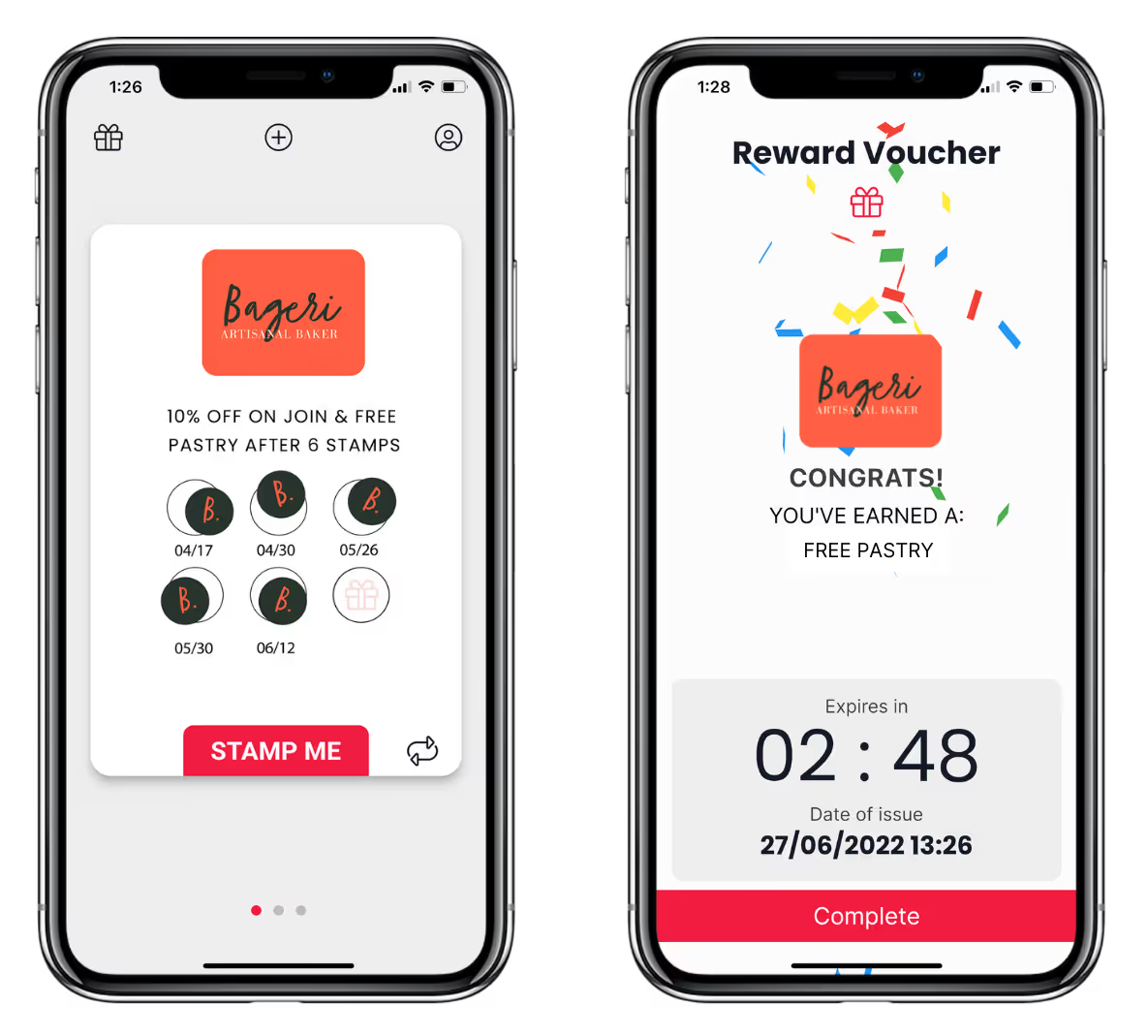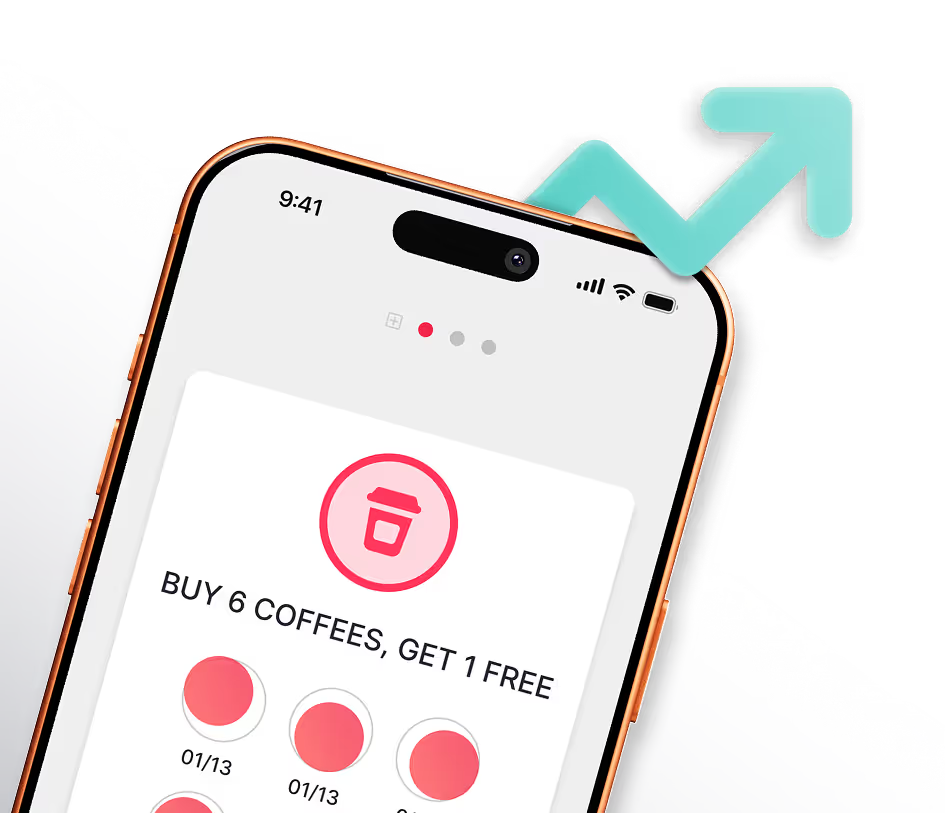How to Know if a Loyalty Program Will Work for Your Business

Despite all the content you’ll find online surrounding how to set up a loyalty program for your business, there’s not a lot of information readily available on how to determine whether your business would actually benefit from one.
Of course, there’s a bottomless pit of statistics around customer loyalty that make a good case for rewards programs:
- A 5% increase in customer retention can increase profits by up to 125% (Bain and Company).
- A 2% increase in customer retention has the same effect as cutting costs by 10% (Emmet & Mark Murphy).
- Existing customers spend 67% more than new customers (Bain & Company).

However, this doesn’t make a loyalty program feasible for every business in every industry. Here at Stamp Me Loyalty Solutions, we’ve found that asking yourself the following three questions will give you a much clearer idea of whether a loyalty program would work for your business.
1. Do Your Products and/or Services Have Repeat Purchasability?

Some businesses rely heavily on repeat customers buying the same product or service over and over again. Some businesses don’t operate that way at all. For example, cafes, car washes and hair salons would be in the top tier of repeat purchasability (whether the business has a loyalty program in place or not).
These kinds of businesses see a lot of the same faces on a day-to-day, week-to-week or month-to-month basis. People who enjoy drinking coffee or tea socially tend to do so regularly, the same way that people will get their haircut or their nails done routinely.
Once someone finds a local coffee shop, bar, restaurant, hairstylist, nail salon etc. that they like, it becomes their go-to destination. Thus their “customer lifetime value” cycle begins.
As for clothing stores, bookshops, homewares and décor businesses, veterinarians, and so on; you could argue that these businesses would fall into the second tier. They might see a lot of customers returning for repeat purchases, but perhaps not at the same frequency as the top tier.
At the other end of the scale, you’ve got businesses like car dealerships and shops that exclusively sell large wide-screen TV’s or pianos… generally, you wouldn’t expect a high rate of repeat business in stores like these!
So, where does your business stand on the “repeat purchasability” scale? There is certainly potential for an effective and highly-functioning loyalty program in the first and second tiers.
Do you sell products and services that people frequently buy numerous times, like cosmetics and manicures? Does your business offer a wide variety of products that might entice the same customers to regularly return, but make alternative purchases, like a sports shop, homewares/furniture shop or electronics store?
If your answer is “yes” to either of these questions, then it’s definitely worth considering a loyalty program for your business in 2023. Read this to learn why loyalty programs are imperative to business success.
Perhaps you own a hotel that sees a high volume of repeat guests in the form of business travellers and seasonal holidaymakers. This type of business aligns with those in the second tier, and a rewards program would definitely be feasible. Learn more about hotel loyalty programs.
2. Are Your Profit Margins Above the 10% Mark?

I recently wrote an article explaining How to Measure Your Loyalty Program’s ROI, which is useful for ascertaining whether your loyalty program is turning a profit or a loss.
While the costs of running a loyalty program have dropped dramatically in recent years as digital loyalty app providers and other convenient solutions have emerged, companies that are operating on a profit margin of less than 10% might find that offering rewards will hurt their bottom line.
Even if the upfront costs of creating your loyalty program are low, it can take a little while for the ROI (return on investment) to kick in and the benefits to reveal themselves. This is fine, as long as you can afford to sustain the initial period of promoting your loyalty program and reeling customers in with enticing rewards.
If your profit margin is 10% or higher, then your business is probably well positioned to manage a loyalty program.
3. Do Your Competitors Have Loyalty Programs?

The logic behind this question is fairly obvious. Whether you are running a small independent business or a global company with outlets in numerous international markets, it’s always crucial to keep an eye on what your competitors are doing.
If you find that none of your competitors are offering loyalty programs - why? It might be that they have tried and failed, which is a good indicator of whether one would be sustainable for your business. Of course, it could also mean that you are ahead of the curve, and could potentially entice some of your competitors’ customers with attractive rewards.
However, if your competitors have loyalty programs, you’re at risk of alienating your existing customer base. Consumers like to feel appreciated by the brands they give their business to, and if they feel that your business doesn’t value their loyalty, they’re likely to jump ship!
Take a look at your competitors’ loyalty programs. Are they achieving results? If so, how do they operate? How are these businesses promoting their loyalty programs? What kind of rewards are they offering?
Upon doing this research, you might find that the kind of program your competitors are operating isn’t feasible for your business. Perhaps they have a larger budget, less expenses or overheads, or some other reason that makes a loyalty program viable for them but not you.
On the other hand, it might simply be that while one type of loyalty program works for their business model, a different setup would be more suitable for yours. So…
What are the different types of loyalty programs?
There are numerous ways to operate a loyalty program, but generally they all fall into these three key categories.
1. Points-based System

This is your classic “Buy 8 and Get Your 9th Free” structure that existed long before digital loyalty programs existed. The main motivation behind a points-based system is to increase a customer’s FOV (frequency of visit).
The customer receives a point or stamp every time they make a purchase from the store, whether it’s a single $3 item or a bigger purchase of several products.
This system works well for cafes, hair salons, fast food restaurants and similar businesses with lots of foot traffic. However it might not be ideal for a clothing store or homewares outlet, for example.
Why? Because if two customers make a purchase and receive a point or a stamp, they have made equal progress towards a reward. But what if one of them bought a $2 pair of socks and the other spent $180 on various new outfits? Doesn’t the higher spender deserve faster progress towards their reward?
This is the basis of our next type of loyalty program:
2. Spend-based System

Whereas points-based systems focus on frequency of visit, a spend-based system is designed to increase a customer’s ATV (average transaction value).
To use the homewares outlet example, imagine you bought a new sofa for $490, and this puts you $10 shy of redeeming a 20% discount on your next purchase. The customer service assistant might suggest that you complement your new couch with a $20 cushion or a throw, entitling you to redeem your reward today, which you could spend on another item.
This is an example of how a spend-based loyalty program structure upsells, and encourages people to add to their basket.
Depending on what kind of business you own, this type of loyalty program might be more applicable to you than a points-based system.
3. Paid Membership

This kind of loyalty program is more unique to the first two, and you see it all the time in the form of Spotify, Netflix, Amazon and so on.
It’s absolutely possible to be members of these programs without spending a cent, but it’s extremely limited and the temptation to pay for the perks is always strong.
The subscription-based model works remarkably well for streaming services, cosmetics brands, and generally any business that already has a sizeable pool of existing customers that regularly make purchases or engage the brand in other ways.
If your business provides an ongoing service for people – like website hosting (SquareSpace), social networking (LinkedIn Premium) or online shopping (Amazon Prime) – there’s a good chance that a paid membership system would be ideally suited for your business model.
So… would a loyalty program work for your business?
In case the information above hasn’t made it clear, it’s important to think bigger than retail and hospitality when considering a loyalty program for your business.
Brand loyalty and customer retention is crucial for companies in any number of industries, from travel and tourism to pharmaceutical products, and even education. You can read more about other industries that benefit from loyalty programs here.
Regardless of what kind of business you own, it’s highly likely that a well-designed loyalty program will enhance brand engagement among your existing customers, and constantly work to increase your customer acquisition rates too.
If you’re still unsure about whether you’d like to create a loyalty program for your business, feel free to get in touch with a friendly member of our team to discuss whether our award-winning loyalty solutions would benefit your specific type of business.
More Posts

It’s often more than you think. Plug in your daily customer numbers to see your potential returns instantly.






.webp)